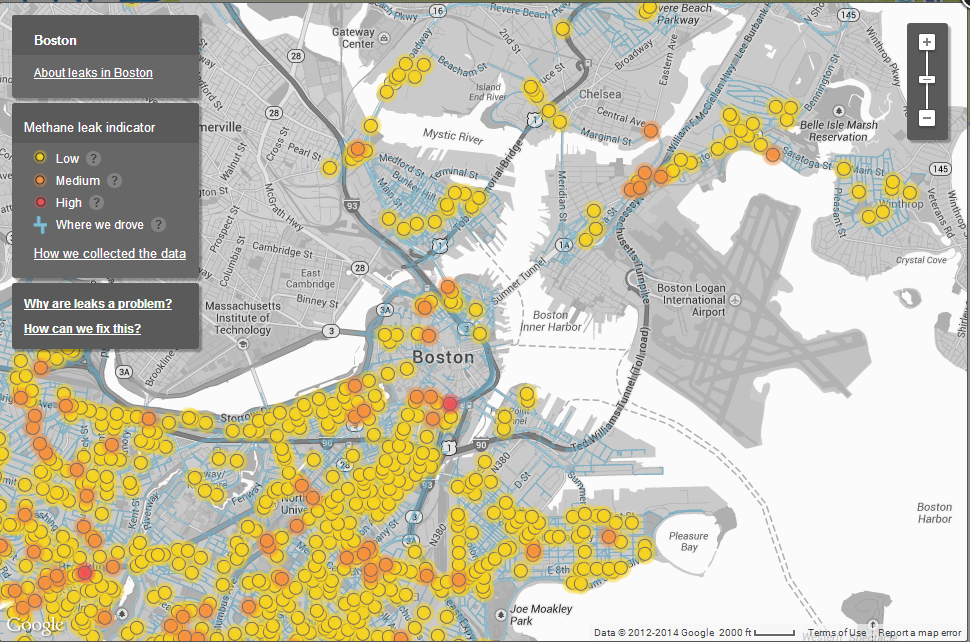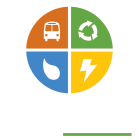
If you’ve noticed Google Maps cars driving around the city lately, don’t worry – they haven’t taken any pictures of you walking to the grocery store in your pajamas (as far as we know). What could they possibly be doing, instead? Measuring the city’s gas leaks, of course!
This collaboration between the Environmental Defense Fund, Google, Colorado State University, and utility companies allows you to take a look at Boston and exactly where its gas leaks are located.
Thanks to researchers at Colorado State, Google Maps cars were able to drive around the city measuring methane concentration, wind direction, and wind speed across the Greater Boston area. The blue lines map the routes the vans drove around the city.
As you can see, Boston’s historic neighborhoods, like the South End and Dorchester, have a higher concentration of leaks, while the newer Seaport district is relatively gas leak free.
On average, Boston has about one leak per mile throughout the city, and most of this can be attributed to the fact that we live in an old city with older pipes. While this may seem scary, natural gas leaks are rarely a problem for human health. But if you think you smell a gas leak, report it to National Grid’s 24 hour emergency gas hotline (1-800-233-5325). Boston Climate Action Network and additional environmental organizations, in particular, have gone on “gas leak safaris” to attempt to report leaks.
Methane’s real impact is on climate change. About 25% of manmade global warming comes from methane emissions. And pound-for-pound, methane is 120 times more potent than CO2 in the short term. Over a 100 year period, the comparative effect of methane is 20x greater than that of CO2.
In order to combat this effect Governor Deval Patrick signed a new piece of legislation that specifically targets natural gas leaks. “An Act Relative Gas Leaks” breaks gas leaks into three categories:
- Grade 1 leaks are the most serious and needs to be repaired immediately
- Grade 2 leaks are nonhazardous, but have a potential future threat and need to be repaired within a year
- Grade 3 leaks are considered nonhazardous and nonthreatening, but need to be reevaluated every year
Additionally, the new bill specifies that gas companies need to prioritize all leaks found in a school zone.
The City of Boston has paired up with gas companies to coordinate street, sidewalk, and gas infrastructure repair and replacement through the use of the City of Boston Utility Coordination Software (COBUS).


Recent Comments